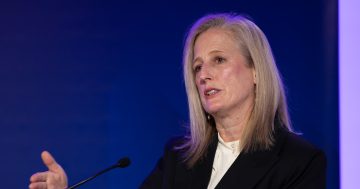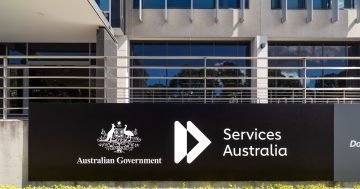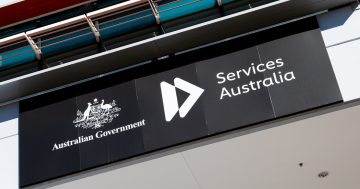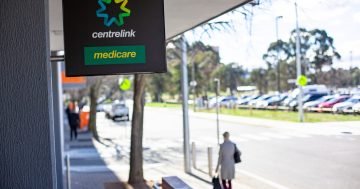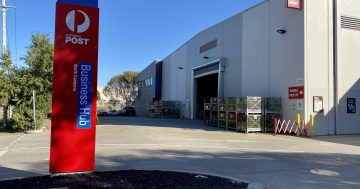Russell Egan* shares his insights on where the public service is heading in the post-pandemic future.
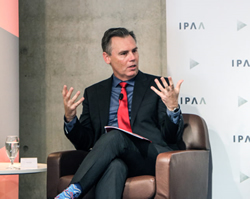 Recently, I was asked to share my advice at a Future Leaders Conference.
Recently, I was asked to share my advice at a Future Leaders Conference.
What lessons from 2020 did I have to give to the next generation?
Even with a career spanning more than 20 years across the private and public sectors, both here and abroad, nothing could have prepared me for the challenges of COVID-19.
Fortunately, we had been building the architecture at Services Australia that has ultimately seen us through one of the toughest times our community has ever experienced.
We’re certainly not out of it yet, but work we’ve done this year has rapidly accelerated where we were going.
It’s ensured we’re able to support our customers, including 1.5 million new job seekers.
Past to present
Over the last few years, we’ve focussed more than ever on customer experience. Then 2020 came along and cemented the focus, front and centre.
We’ve shifted to taking on the entire perspective of the customer journey with us.
From when a person first needs support and starts looking for information, to applying, receiving and managing their payment.
We’re re-designing our services by understanding the needs of our customers in a way that’s respectful of their time.
Our CEO, Rebecca Skinner recently discussed the tools we’re using to understand the customer experience in digital channels.
This includes close collaboration with policy agencies and key stakeholder groups. Using evidence, data and customer insights to influence, and really understand the intent of the policy.
We’re changing the reporting process with the introduction of Single Touch Payroll (STP), in partnership with the Australian Tax Office (ATO).
Minister for Government Services, Stuart Robert has written about how we’re changing the 100 year old income reporting process.
Using STP, Centrelink claims will be pre-filled with the information employers have already provided to the ATO, and people will no longer need to calculate their income.
It’s our job to ensure we understand what’s going to work and achieve the best outcome for customers and our staff – while delivering our business and meeting the government’s intent.
What we’re doing
We aim to exceed customer expectations and dramatically change the face of government service delivery through our digital transformation.
As part of our Welfare Infrastructure Payment Transformation (WPIT), we’ve started delivering Centrelink payments with a new reusable Payment Utility.
This technology can also provide whole of government support for payments anywhere across the country, for any level of government.
By 2022 we’ll also have a new Entitlement Calculation Engine, to replace the heart of the welfare payment system.
We’ve conducted user research to identify common questions about how JobSeeker and JobKeeper Payments impact each other.
We’re able to feed that detail back to the appropriate teams quickly to make improvements to our processes.
We’re using data analytics to identify trends with our services.
For example, we’ve been able to identify a common occurrence with customers having difficulty uploading a particular document.
This enabled us to quickly provide the advice our IT specialists needed to fix the problem.
How we’re changing
Efforts are underway to simplify the delivery of policy, such as what we’ve done to streamline JobSeeker Payment National Manager Ailsa Borwick recently shared her insights on this work in an IPAA podcast.
In introducing the temporary changes to the JobSeeker Payment, there was a clear need to enable customers to complete their claim in the digital channel with reduced manual handling by staff.
The end result was a first for us.
Never before have our customers had the ability to complete a claim online, processed end to end without visiting an office.
We removed the complexity and red tape, and provided a service for eligible customers, from the safety of their home.
But it’s not enough to invest in improving our systems. It’s also about putting in the research to make sure what we’re doing is working.
We’ve used advanced digital analytics data to measure the difference in the customer experience between the standard and streamlined JobSeeker Payment online claims.
This analysis confirmed the streamlined claim was playing its role in getting support to customers quicker, and gave us insight into how the customer experience can be transformed over time.
The impact of COVID-19
COVID-19 has had a profound impact on the Australian workforce and our response to support Australians in their time of need has been critical.
I lead a team of brilliant people who worked tirelessly day and night for months to ensure we could provide the services customers needed at a scale we’ve never experienced before.
Since March this year, my team has had responsibility for more than 70 new and temporary changes designed to accelerate access to financial and Medical support for people affected by COVID-19.
These included the implementation of the Economic Support Payments, Coronavirus Supplement, Pandemic Leave Disaster Payment and streamlining the JobSeeker Payment claim.
During the height of the pandemic, we processed 1.3 million JobSeeker claims in 55 days, a claim volume normally processed in two and a half years.
At the peak of demand, more than 53,000 claims were completed in a single day.
Vital changes also included the government’s health response including greater access to mental health support and telehealth.
It’s now possible to manage all Medicare related claims, changes or enquiries online or over the phone.
And myGov now has the largest capacity of any authenticated online platform in Australia.
What does the future look like?
The future looks bright. We’re recognising that Australians are seeking more simple, helpful, respectful and transparent ways to access our services.
We’re delivering high quality, accessible payments and services so people can get on with their lives.
We’re building on the rapid advances of 2020, including the consistent delivery of more than $200 billion in payments each year.
We’re using technology to make our services more convenient, including the expansion of telehealth and ‘tell us once’ approaches, and trialling access to Centrelink assistance via video chat.
And most importantly, we’re drawing on customer experience and staff intel to find better ways of serving Australians.
We’ve recently started trialling a new way of delivering face to face services, specially tailored to particular customer groups.
My advice
My advice to the next generation of leaders who may be at the helm of our next crisis is simple.
There’s a shared goal in a time of crisis. It’s important to reach out for help when you need it.
In my experience, most people are willing to go above and beyond to help their colleagues.
Good ideas can come from anywhere. An inclusive approach is the best way to design good solutions.
It’s important to have a good sense of your own work, and your own values. These are important anchor points through a heightened period of change.
* Russell Egan is Deputy Chief Executive Officer of Customer Service Design at Services Australia.
This article first appeared at servicesaustralia.gov.au.



